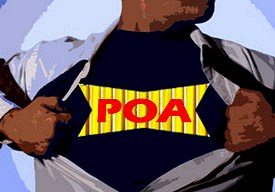Presumptions of Resulting Trust
The deceased’s mother died intestate.
At date of death, a number of monies were in joint accounts bearing names of deceased,daughter L and granddaughter R
L took more interest in deceased than did daughter M and cared for her during last years of her life
The deceased and M were not estranged , while the relationship between L and M ( the sisters) was distant.
M was happily married and financially secure, while L was not
M as administratrix of estate brought action for monies in joint accounts to accrue to deceased’s estate.
The Court allowed the action as monies held in joint accounts were held on resulting trust for deceased’s estate, and there was a presumption of undue influence that was not rebutted.
L was unable to establish that the joint accounts were gift from deceased.
A Presumption of undue influence arose because L had opportunity to influence deceased .
The deceased was elderly with physical disabilities and depression, and lived in L’s home .
The presumption of undue influence was not rebutted .
Historically, there was equality of treatment by deceased and her husband towards daughters .
L’s ill will toward M may have influenced deceased’s feelings toward M.
L was involved with all of deceased’s investment transactions.the deceased did not sign many documents relating to joint accounts.
Without evidence that deceased was independently advised of these transactions, it was not assumed that deceased intended that one daughter was to be disinherited by them .
The Courts’ analysis is as follows. Besides the two Supreme Court of Canada cases, they also cited an American decision, which is quite rare in Canadian law.
The law regarding the use of a joint account as a method of devising property upon a donor’s death has recently received the attention of the Supreme Court of Canada in the case of Pecore v. Pecore, 2007 SCC 17 (S.C.C.), and Saylor v. Madsen Estate, 2007 SCC 18 (S.C.C.). Essentially, the basic principles are that where the other joint holder is an adult child of the person who is providing the monies, the opening of the account is to be characterized as a gift made at the time that the monies are placed into the account. Since they are a gift, prima facie, the monies are deemed to be the subject of a resulting trust back to the donor unless the donee can demonstrate on a balance of probabilities that the donor intended the monies to be a gift. It essentially boils down to a question of the donor’s intent and whether the donee has overcome the onus of proof. The proof of intent would need to include the existence of a desire on the part of the donor that the monies are to accrue to the donee upon the donor’s death, rather than simply a desire that the donee only administer the funds during the donor’s life.
” 29 There is another presumption that may enter into the mix in this case. That is the presumption which is applicable to gifts made in circumstances where the donee has the opportunity to unduly influence the mind of the donor. This presumption was set out in the judgment of Wilson J. in the case of Goodman Estate v. Geffen, [1991] 2 S.C.R. 353, [1991] S.C.J. No. 53 (S.C.C.). In that case, Wilson J. outlined the need to examine first the relationship that existed between the donor and the donee. If that relationship allowed for an opportunity on the part of the donee to influence the donor, then a presumption of undue influence arises. As to the degree of influence, Wilson J. said, at para. 40:
It seems to me rather that when one speaks of “influence” one is really referring to the ability of one person to dominate the will of another, whether through manipulation, coercion, or outright but subtle abuse of power.
30 Wilson J., further went on to say:
45 Once the plaintiff has established that the circumstances are such as to trigger the application of the presumption, i.e., that apart from the details of the particular impugned transaction the nature of the relationship between the plaintiff and defendant was such that the potential for influence existed, the onus moves to the defendant to rebut it. As Lord Evershed M.R. stated in Zamet v. Hyman, supra, at p. 938, the plaintiff must be shown to have entered into the transaction as a result of his own “full, free and informed thought”. Substantively, this may entail a showing that no actual influence was deployed in the particular transaction, that the plaintiff had independent advice, and so on. Additionally, I agree with those authors who suggest that the magnitude of the disadvantage or benefit is cogent evidence going to the issue of whether influence was exercised.
31 The reasoning for such a presumption is to ensure that people in dependent circumstances are not taken advantage of by those upon whom they are dependent. Not every case of an elderly person making a gift to an adult child will occur in circumstances of dependency. However, where such circumstances of dependency do occur, placing the onus upon a donee is the law’s way of protecting against unfair transactions.”







